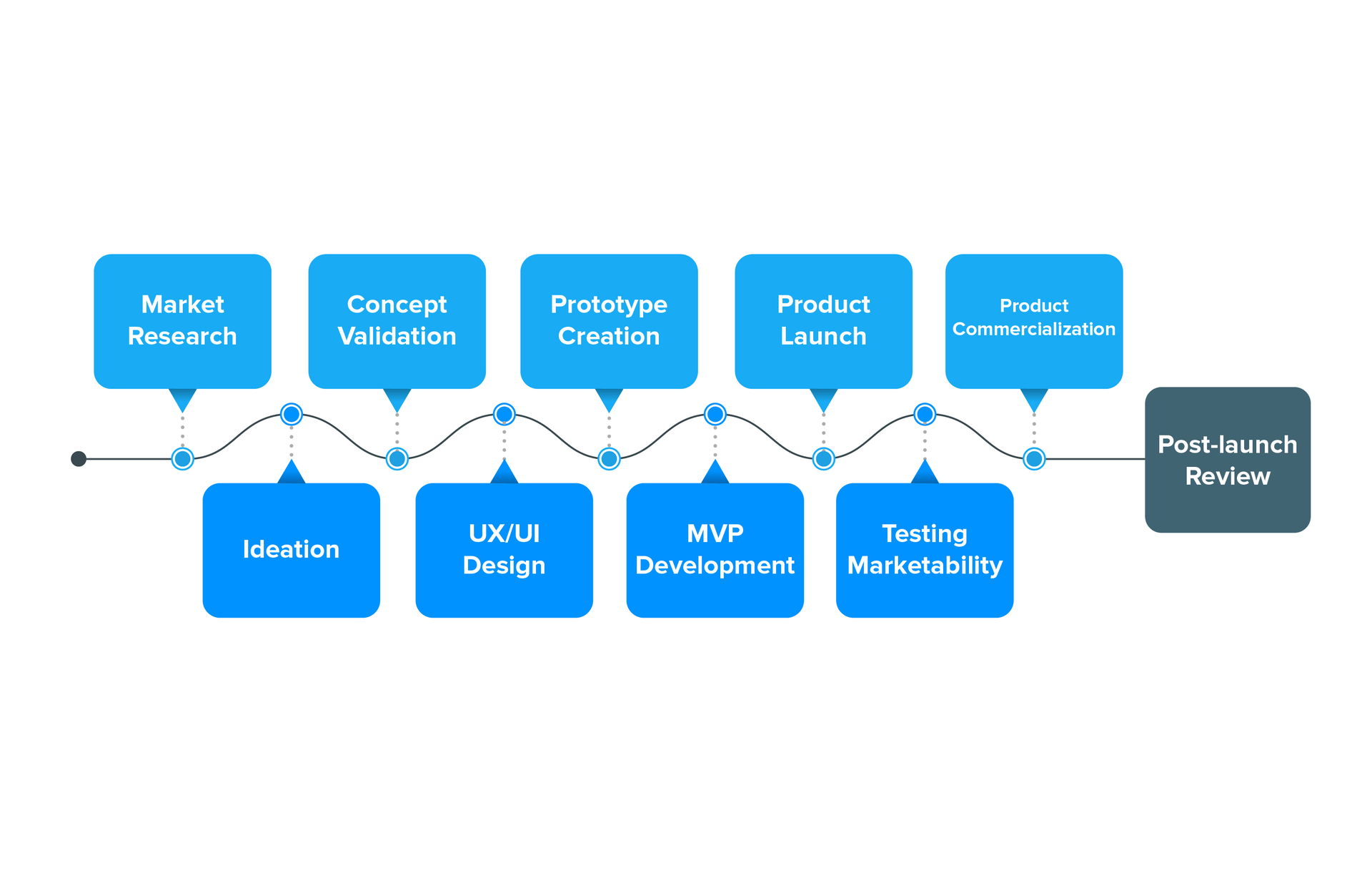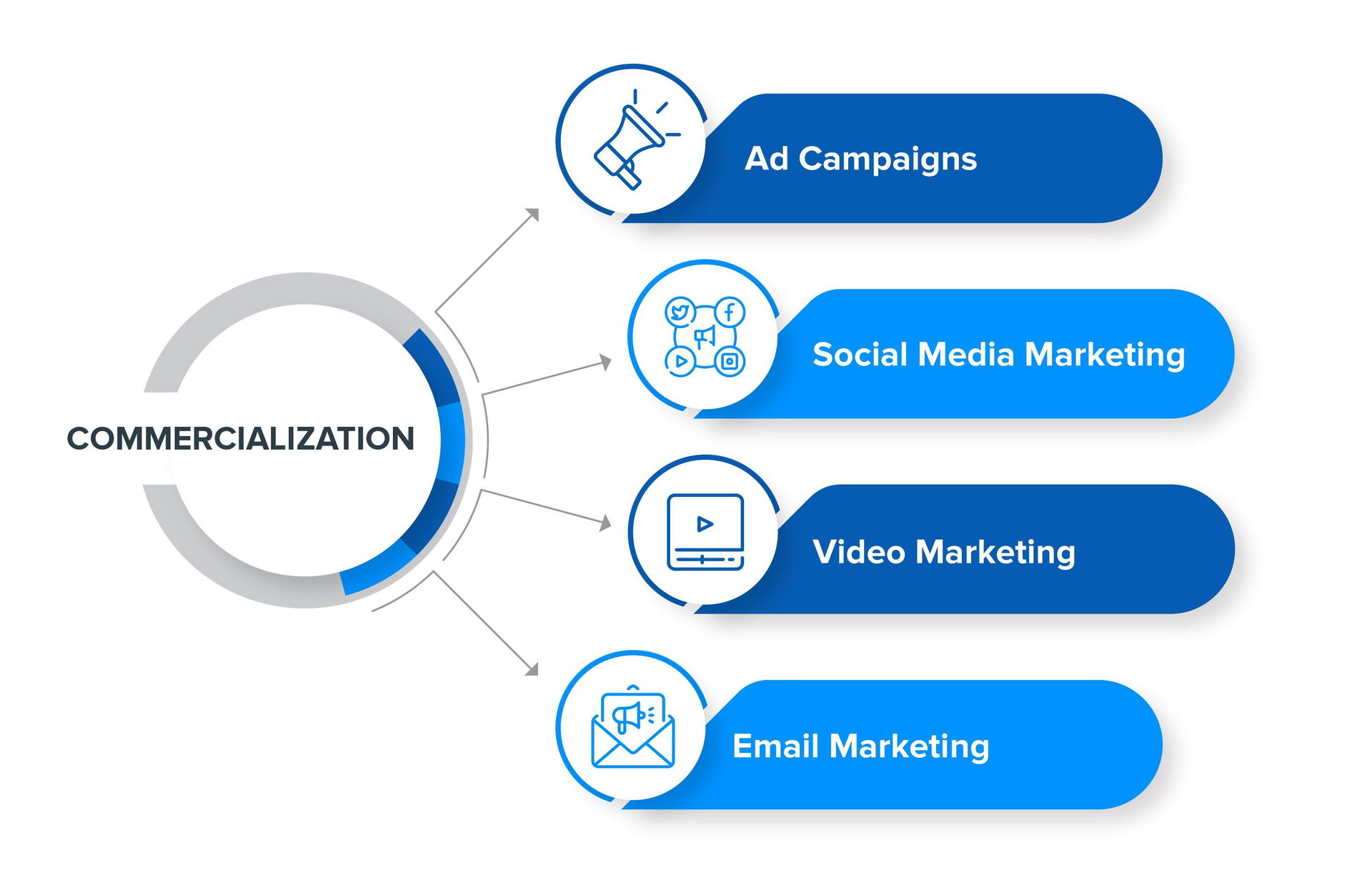In the age of technology, software plays a fundamental role in our lives. But to develop robust software, every startup has to go through a set of challenges, from initial ideation to the product launch. Hence, startups must have a persuasive process to get rolling with product development. And a detailed software product development guide for startups is vital to deliver truly innovative products and experiences.
According to a Gartner’s report in the late 2020s, the valuation of custom software development reached $70 billion, which keeps on growing at a speed of 5% each year.
However, do you know how to create a smooth software product development process? If not, this article will walk you through each stage of product engineering and enlighten you on why it is critical for startup success.
The step-by-step product development process
The process of product development has progressed in the past few years. It outlines ten steps vital to take a product from initial conception to post introduction. Regardless of which industry you are into, it will help you to launch your upcoming products successfully. So, let us dive into a detailed guide on the software product development process.
1. Conduct a profound market research
Research is a part of planning, and well-thought planning lays a cornerstone of software product development. So, the first step to effective product development is to conduct qualitative and quantitative market research. You will also have to do profound research on the product. The market research will enable you to figure out:
- Current and future trends
- Customer requirements
- Emerging market demand
- Potential business risks
- Market competitors
2. Conceptualize your idea
The second step is idea generation. Based on the market research and customer needs, you will need to formulate one brilliant product idea. As a startup owner, you must create a comprehensive vision for the product, and you can do it effectively by organizing a brainstorming session. A clearer idea and sheer goals are the foundation of successful product development.
3. Validate the concept
Once you have figured out your idea, the third step is to validate it and call it a concept. It includes concept development and prototyping, which will enable you to perceive all of the concerns your product can solve and correct them on time. You can make your potential customers visualize the final product and conduct their interviews to receive meaningful feedback. The concept development includes the following easy to follow steps:
- Evaluating the gain or pain ratio
- Highlighting innovative product features
- Formulating a value proposition chart
- Creating a robust market strategy
4. Draft UX/UI design
The next step for startup companies is to move on to UX/UI design and commence drafting graphic concepts for the product. It is one of the most critical steps as it will help you perceive how your product will exactly look. However, the resulting look of the design will be in the form of wireframes. But you can prototype the wireframes that can work in high-fidelity.
5. Create prototypes
The prototyping is an intermediate stage of the product development process that falls between the conceptualization and execution processes. It is much like a mock-up of the product. Prototypes are like the first versions of an actual product. Creating a prototype will let you experiment with your product and improve it until it meets the desired standards.
6. Launch the MVP
After creating prototypes, the next step is to develop the minimal viable product (MVP). An MVP is a basic form of your product with basic features. It will allow you to amend your product as per your customers’ needs and turn it into something more valuable. So, MVP is all about building a functional product with minimum money and time.
7. Develop and launch the product
The product development stage begins with the prototyping and ends with the minimum viable product (MVP) launch. It is one of the most time-consuming parts of the entire software development process for obvious reasons. It is all about transforming product requirements into a tangible, operational product.
8. Test market adoption
Once you launch the product or go live with it, the next step is to test how well your product is performing in the market. It involves receiving feedback from your potential audience. There are two types of marketability tests:
Alpha test: It is also known as user acceptance testing. Test engineers conduct this testing to examine the performance of the product. Alpha testing helps them to ensure the software product is bug-free.
Beta test: It is also known as marketability testing. In this phase, customers use the newly launched product and provide feedback. For instance, Google and Apple frequently perform beta tests to detect bugs in a product.
9. Commercialize the product
Once you complete the marketability testing, the next step is to commercialize your product to target customers. It is all about how well you can market your product. You should create a persuasive marketing strategy that must include these four advertising and marketing tactics:
10. Conduct post-launch review
The last step is to keep an eye on the product and its pricing. Once the product reaches the customers, you need to reassess its price and analyze if you need to make continuous modifications, as per the changing times and needs. If so, do not hesitate to introduce pricing amendments and feature updates.
Get to market faster!
The righteous software product development process can help you transform your ideas into operational products. Each stage must have an objective, and every startup product development company needs to ensure to implement it in a way that serves the purpose behind it. If you want to implement a successful software product development process, our experts are here to help.


